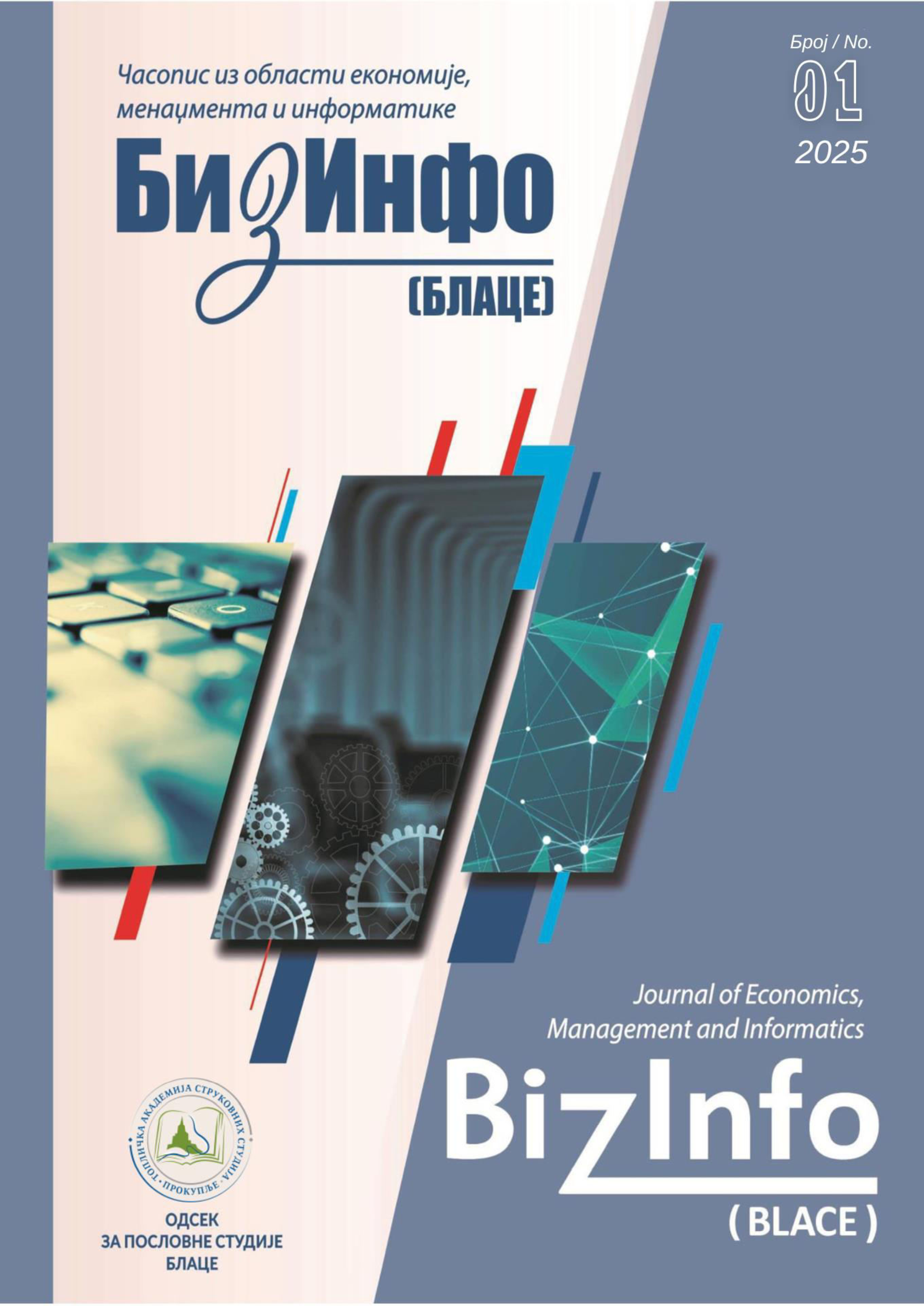Media and culture-based public in the quadruple helix innovation model
DOI:
https://doi.org/10.71159/bizinfo250013CAbstract
Spiral innovation models challenge the technological and economic determinism inherent in linear "science and technology push" and "demand pull" frameworks that explain the primary drivers of innovation. These models posit that innovation is a multifaceted phenomenon, shaped by socio-economic contexts and cultural-historical legacies. The Quadruple Helix model extends the foundational Triple Helix by integrating civil society as a fourth dimension alongside academia, industry, and government. This expanded model emphasizes the interplay between these actors and civil society in shaping demands for innovative solutions in products and services. Civil society, as a multi-layered concept, encompasses media, culture, social values, lifestyles, art, and democratic principles. This paper critically examines the role of the culture- and media-based public and the inherently ambivalent nature of civil society within the Quadruple Helix model. By exploring their influence on the commercialization of knowledge into innovation, the analysis underscores the theoretical and practical implications of this extended framework.
Downloads
References
Amaral, M. G., & Cai, Y. (2022). The tribology of the helixes: Relations between triple, quadruple, and quintuple helix models. Triple Helix Journal, 9(1). https://doi.org/10.1163/21971927-12340006
Bonetto, E., Pichot, N., & Adam-Troïan, J. (2022). The role of cultural values in national-level innovation: Evidence from 106 countries. Cross-Cultural Research, 56(4), 307–322. https://doi.org/10.1177/10693971221078087
Cai, Y., & Amaral, M. (2022). Triple helix model of innovation: From boundaries to frontiers. Triple Helix Journal, 9(2), 107–117. https://doi.org/10.1163/21971927-12340007
Cai, Y., & Etzkowitz, H. (2020). Theorizing the triple helix model: Past, present, and future. Triple Helix Journal, 6(1), 1–38. https://doi.org/10.1163/21971927-bja10003
Cai, Y., & Lattu, A. (2022). Triple helix or quadruple helix: Which model of innovation to choose for empirical studies? Minerva, 60, 257–280. https://doi.org/10.1007/s11024-021-09453-6
Carayannis, E. G., Grigoroudis, E., Stamati, D., & Valvi, T. (2019). Social business model innovation: A quadruple/quintuple helix-based social innovation ecosystem. IEEE Transactions on Engineering Management, 68(1), 235-248. https://doi.org/10.1109/TEM.2019.2914408
Carayannis, E. G., Goletsis, Y., & Grigoroudis, E. (2018). Composite innovation metrics: MCDA and the quadruple innovation helix framework. Technological Forecasting and Social Change, 131, 4–17. https://doi.org/10.1016/j.techfore.2017.03.008
Carayannis, E. G., Campbell, D., & Barth, T. (2012). The quintuple helix innovation model: Global warming as a challenge and driver for innovation. Journal of Innovation and Entrepreneurship, 1(1). https://doi.org/10.1186/2192-5372-1-2
Carayannis, E. G., & Campbell, D. F. (2009). "Mode 3" and "quadruple helix": Toward a 21st century fractal innovation ecosystem. International Journal of Technology Management, 46(3–4), 201–223. https://doi.org/10.1504/IJTM.2009.023374
Cahyadi, A., Marwa, T., Wahyudi, T., Muizzudin, Sulastri, Maulana, A., & Szabó, K. (2024). Exploring the mediating role of innovation in the nexus between national culture and sustainable competitiveness. Administrative Sciences, 14(12), 310. https://doi.org/10.3390/admsci14120310
Cvetanović, S., & Nedić, V. (2019). Inovacija kao razvojni resurs. Niš: Ekonomski fakultet Univerziteta u Nišu.
Escandon-Barbosa, D., Ramírez-Urraya, A., & Salas-Paramo, H. (2022). The effect of cultural orientations on country innovation performance: Hofstede cultural dimensions revisited? Sustainability, 14(10), 5851. https://doi.org/10.3390/su14105851
Etzkowitz, H., & Leydesdorff, L. (2001). Universities and the global knowledge economy: A triple helix of university–industry–government relations. Scientometrics, 58(2), 191–203. https://doi.org/10.1023/A:1026276308287
Etzkowitz, H., & Leydesdorff, L. (2000). The dynamics of innovation: From national systems and "Mode 2" to a triple helix of university–industry–government relations. Research Policy, 29, 109–123. https://doi.org/10.1016/S0048-7333(99)00055-4
Hadiyanto, F., Kharisma, B., Remi, S., & Apriliadi, A. (2020). Quadruple helix model on creative economy development in Bandung regency. International Journal of Criminology and Sociology, 9, 2465–2473. https://doi.org/10.6000/1929-4409.2020.09.299
Halibas, A. S., Sibayan, R. O., & Maata, R. L. R. (2017). The penta helix model of innovation in Oman: An HEI perspective. Interdisciplinary Journal of Information, Knowledge, and Management, 12, 159–172. https://doi.org/10.28945/3735
Harrison, L. E., & Huntington, S. P. (2000). Culture matters: How values shape human progress. Basic Books.
Hofstede, G. (2001). Culture’s consequences: Comparing values, behaviors, institutions, and organizations across nations (2nd ed.). Thousand Oaks, CA: Sage Publications.
Hofstede, G., & Hofstede, G. J. (2005). Cultures and organizations: Software of the mind. Intercultural cooperation and its importance for survival (2nd ed.). McGraw-Hill Companies (UK).
Hofstede, G. (2007). Asian management in the 21st century. Asia Pacific Journal of Management, 24(4), 411–420. https://doi.org/10.1007/s10490-007-9049-0
Inglehart, R., & Welzel, C. (2010). Changing mass priorities: The link between modernization and democracy. Perspectives on Politics, 8(2), 551–567. https://doi.org/10.1017/S1537592710001258
Jensen, K., & Helles, R. (2011). The internet as a cultural forum: Implications for research. New Media & Society, 13(4), 517–533. https://doi.org/10.1177/1461444810373531
Krumsvik, A. H., Storsul, T., Kung, L., & Dogruel, L. (2013). Media innovations: Multidisciplinary study of change. Nordicom. https://doi.org/10.13140/2.1.1328.9284
Lawson, B., & Samson, D. (2001). Developing innovation capability in organisations: A dynamic capabilities approach. International Journal of Innovation Management, 5(3), 377–400. https://doi.org/10.1142/S1363919601000427
Leydesdorff, L., & Smith, H. L. (2022). Triple, quadruple, and higher-order helices: historical phenomena and (neo-) evolutionary models. Triple Helix, 9(1), 6-31. https://doi.org/10.1163/21971927-bja10022
Lundvall, B. A. (1992). National systems of innovation: Towards a theory of innovation and interactive learning. Pinter Publishers.
Lundvall, B. A. (1988). Innovation as an interactive process: From user-producer interaction to the national system of innovation. In G. Dosi et al. (Eds.), Technical change and economic theory (pp. 349–370). London: Pinter Publishers
Mora, L., Kummitha, R. K. R., & Esposito, G. (2021). Not everything is as it seems: Digital technology affordance, pandemic control, and the mediating role of sociomaterial arrangements. Government Information Quarterly, 38(4), 101599. https://doi.org/10.1016/j.giq.2021.101599
Nelson, R. R. (Ed.). (1993). National innovation systems: A comparative analysis. Oxford University Press.
Ochoa Pacheco, P., & Coello Montecel, D. (2022). Does psychological empowerment mediate the relationship between digital competencies and job performance? Computers in Human Behavior, 140(2), 107575. https://doi.org/10.1016/j.chb.2022.107575
Park, S. (2017). Digital capital. Palgrave Macmillan. https://doi.org/10.1057/978-1-137-59332-0
Putnam, R. D. (2000). Bowling alone: The collapse and revival of American community. Simon & Schuster. ISBN: 9780743203043
Putnam, R. D., & Gross, K. A. (Eds.). (2002). Democracies in flux: The evolution of social capital in contemporary society. Oxford University Press.
Ragnedda, M. (2018). Conceptualizing digital capital. Telematics and Informatics, 35(8), 2366–2375. https://doi.org/10.1016/j.tele.2018.10.006
Ranga, M., & Etzkowitz, H. (2013). Triple helix systems: An analytical framework for innovation policy and practice in the knowledge society. Industry and Higher Education, 27(4), 237–262. https://doi.org/10.5367/ihe.2013.0165
Reis, J., Rosado, D. P., Ribeiro, D. F., & Melão, N. (2022). Quintuple helix innovation model for the European Union defense industry: An empirical research. Sustainability, 14(24), 16499. https://doi.org/10.3390/su142416499
Resimić, M., Stojiljković, M., & Raičević, J. (2023). The main elements and factors of the development of the concept of knowledge management in the context of business consulting. BizInfo Blace, 14(2), 83–93. https://doi.org/10.5937/bizinfo230283R
Roman, M., Varga, H., Cvijanović, V., et al. (2020). Quadruple helix models for sustainable regional innovation: Engaging and facilitating civil society participation. Economies, 8(2), 48. https://doi.org/10.3390/economies8020048
Schumpeter, J. A. (1934). The theory of economic development. Harvard University Press.
Schütz, F., Heidingsfelder, M. L., & Schraudner, M. (2019). Coshaping the future in quadruple helix innovation systems: Uncovering public preferences toward participatory research and innovation. The Journal of Design, Economics, and Innovation, 5(2), 128–146. https://doi.org/10.1016/j.sheji.2019.04.002
Taratori, R., Rodriguez-Fiscal, P., Pacho, M. A., Koutra, S., Pareja-Eastaway, M., & Thomas, D. (2021). Unveiling the evolution of innovation ecosystems: An analysis of triple, quadruple, and quintuple helix model innovation systems in European case studies. Sustainability, 13(14), 7582. https://doi.org/10.3390/su13147582
Downloads
Published
Issue
Section
License
Copyright (c) 2025 BizInfo Blace

This work is licensed under a Creative Commons Attribution-NonCommercial 4.0 International License.
















